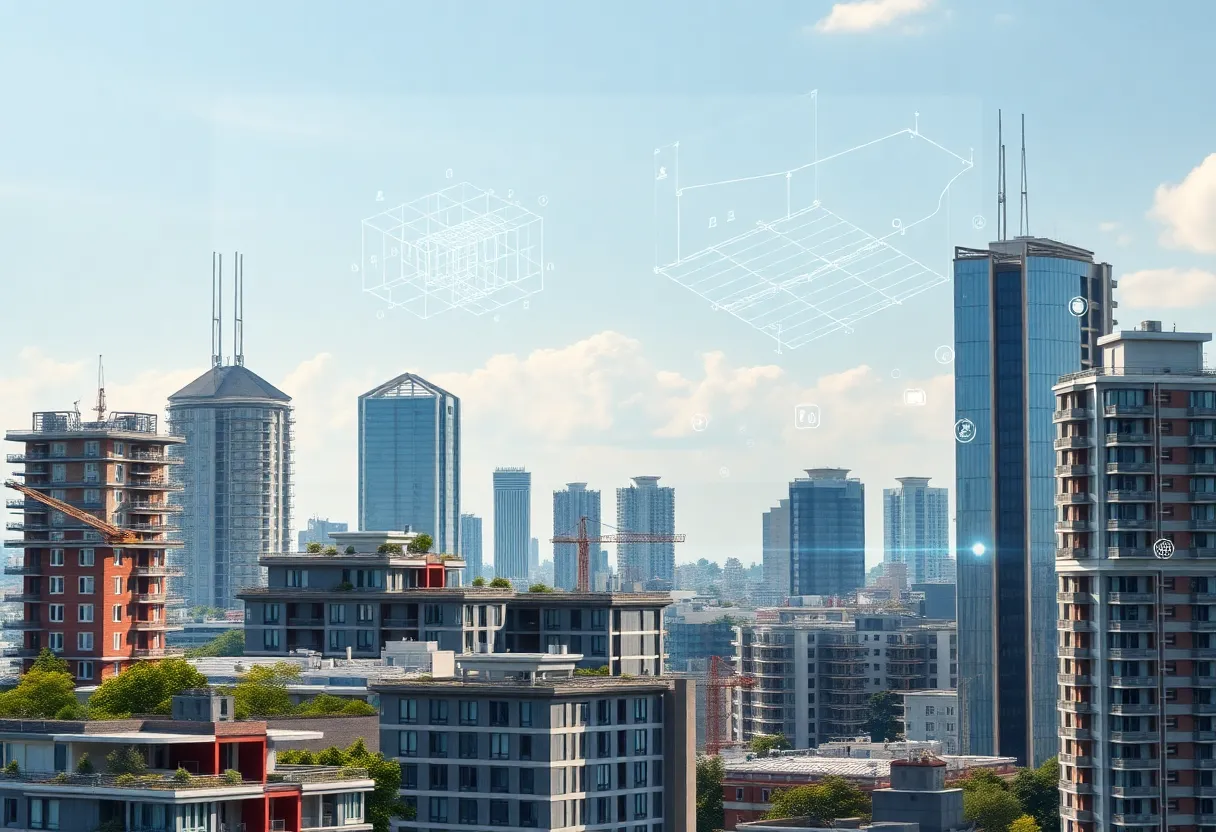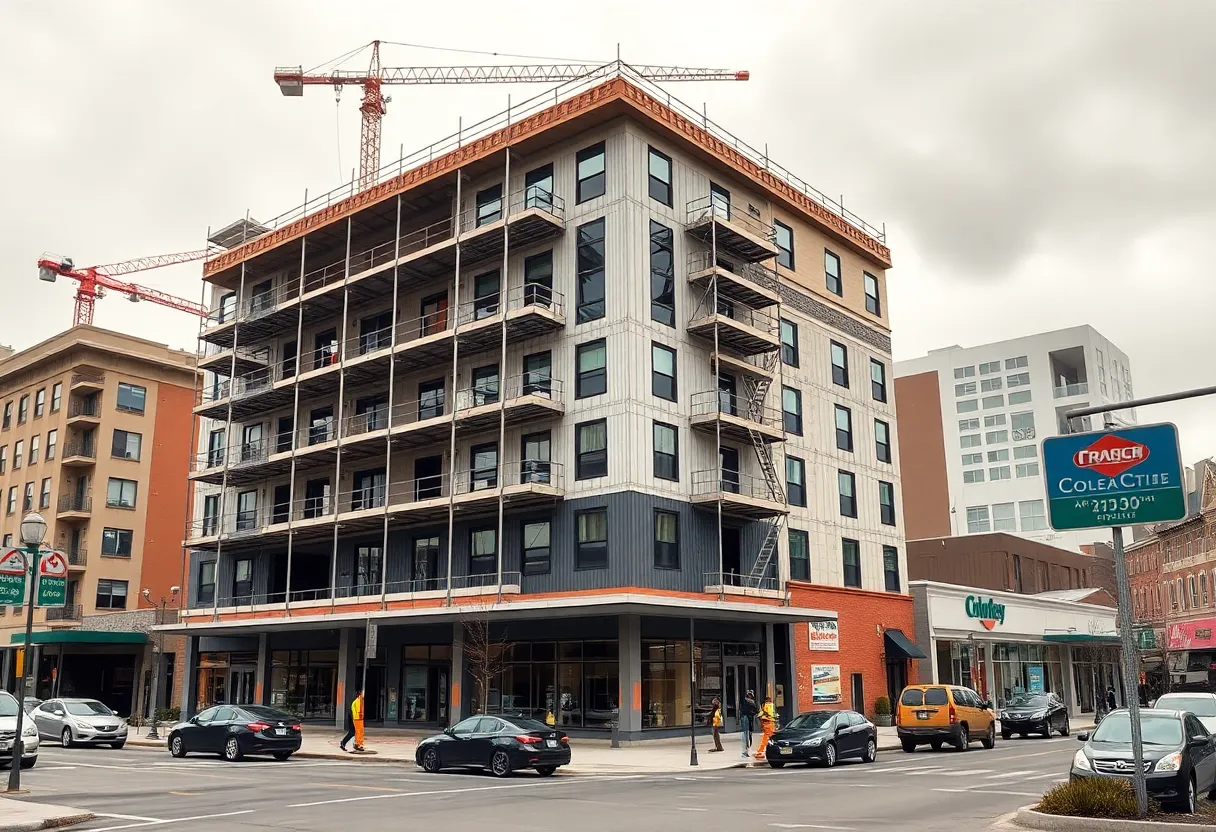Global, September 7, 2025
News Summary
The global architectural services market is valued at approximately USD 184.1 billion and is forecast to reach roughly USD 330.1 billion, implying a 7.57% compound annual growth rate over the forecast period. Growth is driven by urbanization, broad infrastructure programs and rising demand for sustainable, net‑zero design. The sector is shifting to digital workflows—BIM, AI-driven generative design, digital twins, VR/AR, 3D printing and modular construction—while regulations and carbon targets push low‑carbon materials and lifecycle thinking. Firms combining sustainability expertise, data-driven design and new delivery models are best positioned to capture expanding public- and private-sector demand.
Global Architectural Services Market: 2025 Snapshot and 2033 Outlook
The Architectural Services market is sized at USD 184.1 billion in 2025 and is forecast to rise to USD 330.1 billion by 2033, indicating a robust growth trajectory. The market is projected to compound at a 7.57% CAGR over the period from 2025 to 2033, underscoring steady expansion driven by urbanization, infrastructure development, and a rising emphasis on sustainable building design.
Market Scale, Growth, and Segmentation
Market activity spans a wide range of services from conceptual design and planning through construction management and post-construction evaluation. The sector is organized around service types such as Architectural Advisory Services, Construction and Project Management Services, Engineering Services, Interior Design Services, Urban Planning Services, and Other Service Types, with further breakdown by end user and geography. This structure supports diverse demand across commercial, residential, and public projects as density and city-scale initiatives accelerate.
Technology-Driven Transformation
The practice is undergoing a technology-led overhaul. The integration of Building Information Modeling (BIM), artificial intelligence (AI), and 3D visualization is reshaping planning and execution. Digital twins are enabling real-time modeling of building performance, while virtual reality (VR) and augmented reality (AR) have become standard tools for client presentations and design validation. These shifts are enabling more informed decisions, tighter project controls, and enhanced stakeholder engagement.
Demand Drivers and Sustainability Focus
Growth is being propelled by ongoing urban development and infrastructure programs, alongside a rising priority on sustainability. Green architecture and net-zero energy designs are increasingly sought after in both commercial and residential sectors. Regulations aimed at reducing carbon emissions and assessing environmental impact are nudging architects toward eco-friendly materials, renewable energy integration, and smarter building envelopes.
Observations from 2024 and Their Implications
The year 2024 saw a surge in smart city planning and modular construction approaches, signaling a shift toward faster, more flexible project delivery. Architects widely adopted AI-driven design algorithms to improve space efficiency and energy performance. VR/AR usage for client engagement became a standard practice, while digital tools also supported more accurate cost estimation and risk management. These changes contributed to greater transparency and collaboration across project teams, including better alignment with environmental and regulatory requirements.
Advanced Tools and New Capabilities on the Horizon
Looking ahead, the market is expected to continue evolving with AI-powered generative design that can automatically propose optimal layouts based on user needs and environmental conditions. 3D printing is anticipated to extend beyond models to construction components, with the goal of reducing material waste and lowering costs. Smart architecture that integrates IoT sensors will enable buildings to adapt in real time to occupancy patterns and weather conditions. In addition, blockchain-based contracts are likely to improve transparency and efficiency in project management, while vertical and underground design strategies will help maximize space in denser urban environments.
Sustainability, Resilience, and Design Leadership
A strong emphasis on sustainability is shaping design leadership across the industry. Net-zero targets and resilient design principles are guiding material selection and system integration. The overall movement toward smarter, more connected environments is reshaping how projects are conceived, executed, and operated, with end users benefiting from improved energy performance, comfort, and operational efficiency.
Market Outlook and Strategic Implications
As urban cores densify, the market will lean into innovative space optimization strategies, including high-rise vertical solutions and underground developments to better utilize scarce real estate. The service mix will continue to adapt to end-user needs, while technology adoption will accelerate the shift toward data-driven design and project governance. The combined effect is a market that is not only larger but also more integrated with digital infrastructure, sustainability goals, and value-based delivery.
Summary
In short, the Architectural Services market is expanding steadily, guided by urban growth and sustainability imperatives, and increasingly fueled by digital tools and innovative construction methods. The coming years are expected to bring deeper integration of AI, BIM, VR/AR, digital twins, 3D printing, and IoT, along with evolving contracts and governance practices that enhance transparency and efficiency across complex projects.
Key Market Signals to Watch
- Continued AI adoption and generative design for space planning and energy optimization.
- 3D printing of models and components to cut waste and costs.
- Smart building integration through IoT sensors for adaptive occupancy management.
- Digital twin platforms enabling real-time operational insights post-construction.
- Regulatory push toward lower carbon footprints and sustainable materials.
Notes on Sources and Scope
The landscape described reflects a synthesized view of market data, technology trends, and practitioner observations across architectural services. The information covers market size, forecast, growth rate, drivers, and the roll-out of digital tools and sustainability practices, with emphasis on the way projects are conceived, delivered, and operated in the 2020s and beyond.
Additional Context: Industry Segments
Sector coverage includes Architectural Advisory Services, Construction and Project Management Services, Engineering Services, Interior Design Services, Urban Planning Services, and other service types, with analytical attention to how these services serve different end users and geographic regions.
Frequently Asked Questions
What is the current market size for Architectural Services?
The market was valued at USD 184.1 billion in 2025.
What is the forecast for the market by 2033?
The market is projected to reach USD 330.1 billion by 2033.
What is the expected compound annual growth rate (CAGR) from 2025 to 2033?
The forecasted CAGR is 7.57% over the period 2025–2033.
What are the main drivers behind market growth?
Growth is driven by increasing urbanization, infrastructure development, and demand for sustainable building designs.
Which technologies are transforming architectural planning?
Key technologies include Building Information Modeling (BIM), artificial intelligence (AI), and 3D visualization, along with digital twin concepts, VR/AR, and 3D printing.
How is sustainability influencing the market?
Sustainability concerns are elevating green architecture and net-zero energy design across both commercial and residential construction sectors.
What 2024 trends influenced the industry?
Trends included smart city planning, modular construction, AI-driven space optimization, and widespread use of VR/AR for client engagements.
What future capabilities are anticipated for architecture?
Future capabilities include AI-powered generative design, broader use of 3D printing for models and components, IoT-enabled adaptive buildings, and blockchain-based project management contracts.
Key Features Table
| Feature | Detail |
|---|---|
| Market size (2025) | USD 184.1 billion |
| Forecast market size (2033) | USD 330.1 billion |
| Forecast period CAGR | 7.57% |
| Key growth drivers | Urbanization, infrastructure development, sustainable building demand |
| Core technologies driving change | BIM, AI, 3D visualization, VR/AR, digital twins, 3D printing |
| Sustainability emphasis | Green architecture and net-zero energy designs |
| 2024 industry trends | Smart city planning, modular construction, AI-driven design, VR/AR for client work |
| Future capabilities | AI-powered generative design, IoT-enabled adaptive buildings, blockchain-based contracts |
| Market segmentation reference | By service type, by end user, by geography |
| Strategic implications | Increased digitization, emphasis on sustainability, and data-driven project governance |
Deeper Dive: News & Info About This Topic
Additional Resources
- GlobeNewswire: Architectural Services Market Trends (Sept 5, 2025)
- Wikipedia: Architecture
- Irish Examiner: Property — Commercial
- Google Search: Dublin architecture
- GlobeNewswire: Architectural Services Business Report (Dec 3, 2024)
- Google Scholar: architectural services market 2030
- AWS Public Sector Blog: AWS Health Data & AI Day Dublin 2025
- Encyclopedia Britannica: European Health Data Space
- Architectural Record: National Gallery of Ireland — Heneghan Peng
- Google News: National Gallery of Ireland Heneghan Peng





